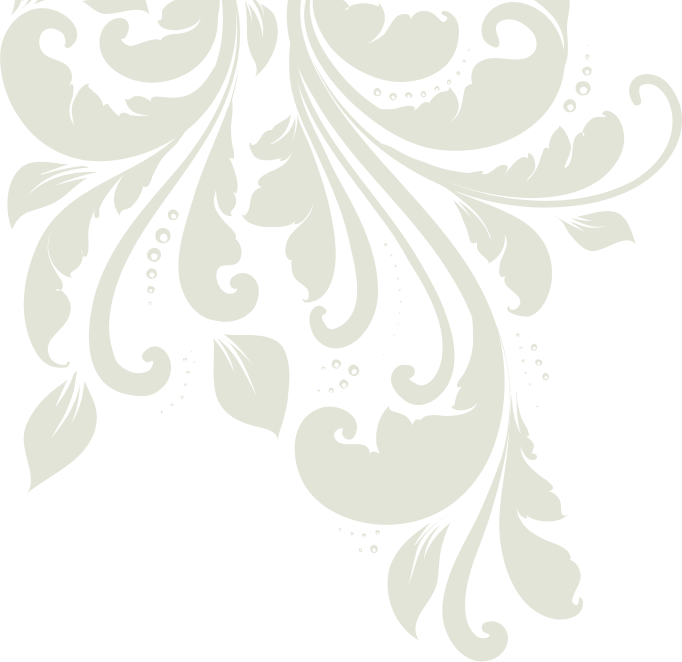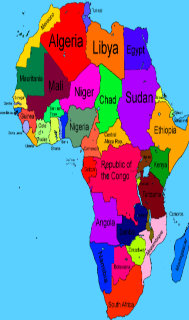



Black History
Timeline
“A Time to Teach.”
The United States is home to people of almost every race, religion, and nationailty. The Indians and Eskimos have been here for thousands of years. Other groups arrived later and came in hope of finding riches, adventure, and a new life. And some, fleeing war, famine, and persecution, sought only safert and a chance to survive. Black people aline were brought here unwillingly, stolen from their homes and forced to live as slaves. In spite of this cruel beginning, black Americans have played a major role in defining and shaping the nation’s security and economic well-being. Black Americans are among our earliest exploreres and have been among the first people to expand and settle the frontier. Of the black Americans profiled on United States postage stamps, they were selected because of the contributions they made to our life and culture. They were also chosen because of the part they played at critical points in our history. U.S. postage stams show black Americans as explorers, settlers, slaves and as patriots in vigorous is an attempt to tell the story of a way of life developed by black people in a white society.African Heritage (300-1619)
Social and economic institutions often develop out of necessity, and it is not until later that rules and justifications develop. When society looks at labor that must be done,most often they turn those unpopular jobs over to those who have no choice except to do them - slavery. Black American history probably got its beginnings when a group of black slaves where forcilby shipped to from their homes in Africa to Amerrica where they were compelled to work. They came in chains, brought to the New World as slaves. The did not immigrate, seeking greater opportunity, like others who came to America. They were seized from their villages and homes and not allowed to take any possessions with them. The ancestors of most black Americans came from the African continet. Most of the Africans imported to the Americas came from Gambia, the Gold Coast, Guinea or Senegal. The native Senegal, who were often skilled artisans, brought the highest prices. On the other hand, the Eboes from Calabar were rated as undesirable merchandise, as they frequently prefered to suicide to life. Those from Gaboons were considered weaklings. The moving of African slaves to other countries began as early as the fifteenth centurn, but the first slaves to land in British America were brought to the state of Virginia by the Dutch in 1619. Over the next 250 years, approximately one million slaves were imported in North America. The aim of slave- trade was to make money for ship-owners who, having bought slaves very cheaply in Africa, slod them again in the Americas at a large profit to slaveowners, who would use them to do all the hard labor on farms and cotton plantations. Since making money was the only objective, no considersation was given to the Africans as animals, often whippng them an even trying them up. ----->African Heritage (300-1619)
Continued
The slaves who arrived at the African slave markets came from tribes all over Africa, and they were throw together in the slave ships without regard for tribe or language. In fact, slave- ship captains made a point of not putting slaves from the same tribes together, for if the slaves had been able to talk with one another, they also might have been able to plan revolts. The same was true of slave owners in the New World. It was in their best interests that slaves not be able to communicate with one another. The slave-ship captains and slave owenrs did not understand that the slaves were able to communicate with one another quire well through their music. Through their songs, the slaves shared the rhythms of sorrow and their fear and their hopelessness. Through the rhythms of their make- shift drums, they communicated their calls to rebellion. For some time, slave masters did not realize that the drums the slaves made from hollowed-out logs or nail kegs, with animal skins tightly stretched over on end, were being used for communication. They thought the slaves were just making their African musci. They knew these drum sounds carried far, even to the next plantation, but it didn’t occur to them that the drumbeats were a sort of “Morse code” to the slaves used to make drums were being used as a form of communication, drums were outlawed. But that didn’t stop slaves from keeping the drumbeat alive. Instead, they used their feet.Indentured Servants and
Slavery (1619 -1860)
America’s colonial period starts with the establishment of the first English settlements in the New World. Introduced to North America in 1619, black slavery would darken the fabric of Americanlife like a spreading bloodstain. The nation had been founded by people who loved liberty, but it became a place where human being could be bought and sold. The African slave trade began not with the English colonist but centuries earlier, when Arabs and various African and European peoples forced blacks into servitude. Eventually, European sugar planters in the Caribbean and South America began to import large numbers of black slaves, men and women who were deprived of their human rights, forced to live in deplorable conditions, and made to work until they dropped. The English colonists of North America knew they needed helpers to build their homes, plow and harvest land, and work their homes. The colonists used a variety of sources for this labor. Indentured servants were used by the colonists. They have up four to seven years of labor just to pay for transportation to America. Apprenctices were opphans, or children of poor parents, who were given to a farmer or trades-man to be trained. These apprenctices would be freed when they teached a specified age. And then there was slavery.
“Sint magna do non
aliquip qui tempor ea sit
eiusmod ad nisi aute
dolor. Aute ullamco
dolore ut id et sit dolore
amet nostrud ut, ipsum
enim consequat.”
John Smith

Copyright © Thankful Heritage, Inc. 2019-2025
Indentured Servants and Slavery (1619 -1860) Continued
The English colonist in the New World imported white indentured workers at first, but found there weren’t enough
of them. The Indians in the Americas refused to work or proved to be poorly fitted for long hours of hard labor.
The Europeans found it easier and cheper to import Africans as slaves. By the seventeenth century, the African
slave trade was booming in the Americas. The slave dealers made so much money for their human cargoes that
soon Africans came to be known as “black gold.” Slaves could be secured in Africa for about $25 a head, or the
equivalent in merchandise, and sold in the Americas for about $150. Later when the slave trade was declared
illegal, Africans brought much higher prices. Many slave-ship captains could not resist cramming their black cargo
into every foot of space, even though they might lose from 15 to 20 per cent of the lot on the way across the
ocean. It is estimated that 7,000,000 Africans were abducted during the eighteenth century alone, when the
slave trade became one of the world’s great businesses.
Since England had no laws that defined the status of a slave, the colonies made uptheir own. These “slaves
codes” protected the property rights of the master. The codes also made sure the white society was guarded
against what was considered a strange and savage race of people. Slaves had almost no rights of their own.
Some masters tried to treat slaves well. George Washington freed his slaves in his will. Thomas Jefferson’s
slaves lived in brick cottages. Jefferson Davis’s slaves governed themselves with slave-run-trial courts. Harsh
slaveowners also existed. They half-starved their slaves, worked them hard, whipped then often, treated them
worse than cattle, and enjoyed making life miserable for them. When a master was cruel, the slaves had no legal
protection from his brutal treatment.
Enforcement of the slave codes varied from one area to another, and even from one plantation to another.
Slaves who lived in cities and towns were less restricted than slaves who lived in the country. Slaves on small
farms enjoyed more freedom than those on huge plantations. Plantation slaves often had little contact with their
masters. Their supervisors were drivers and overseers. Drivers were slaves who were made into bosses by their
master, so they were in a bad situation. Go easy on the workers, and when the work was not done, the driver
would be flogged. Go too hard on the workers and thr driver made enemies among his fellow slaves. Overseers
were whites who took orders from the master. A few were soon managers but most were not. Even in the best
of circumstances, slaves were property and could be bought, sold, lent, or rented out. Their opportunities to
learn and achieve were very limited. The slaves had little personal incentive to work had. Slavery offered little
room for promotions.
In the South, most slaves helped plant and harvest crops. The typical slave worked on a small farm with one or
two other blacks alongside the master and his family. Other slaves worked in an around the master’s house
instead of out in the fields. In Southern towns and cities, blacks served as messengers, house servants, and
craftsmen. In the North, farming was not as important to the economy as it was in the South. Black slaves
therefore worked in a wider variety of jobs. They provided skilled and unskilled labr in homes, ships, factories
and shipyards.
Early Slave Music
How did slaves survive the uncertainty and the danger of harsh treatment? How did they make the best of a bad
situation? Music was a relief for them. The slaves had their songs, and they would re-create their instruments
and their miusci to keep their hearts and souls alive through nearly two hundred fifty years of slavery in the New
World. They liked to dance, sing, and play the banjo, drums or fiddle.
Despite their poor treatment, the land and the culture had become part of them. And in spite of the fact that
most white Americans at them time did not consider blacks to be their equals, whites had taken into their own
hearts certain elements of black culture. By the time the slaves were emancipated, they had given to America
not just the sweat of their brows and the strength of their backs , but the seeds of the first truly American
cultural gift to the world - American music. Blues, jazz, rock’n’ roll orginiated with blacks. And white performers
and groups from Benny Goodman to Frank Sinatra to the Beatles to Rod Stewart to Boy George have said that
they owe their biggest debt to black music. By the time slavery was abolished, most ex-slaves would not go bakc
to Africa, for Africa was no longer their home. America was.
Abolitionist Movement
Despite the risks, some blacks constantly tried to undermine the slavery system. Some slaves chose to destroy
property or fake illness to avoid having to work. Others took bolder steps to overthrow their master by joining
slave revolts. Still others managed to escape. But many - perhaps most - slaves chose not to resists in the face
of almost certain failure and death.
Slaves were suspicious of whites who told them about the “Underground Railroad” that would take them to
freedom. The Undergound Railroad was composed of volunteers who would hide slaves traveling north to
Canada. Slaves were hidden during daylight hours at stops along the route and, using the North Star, they
moved in the dark to the next location 10 or 15 miles north. Until they reached Canada, they were never
completely safe. If they were caught by a slave catcher or United States marshal, they would be returned to their
master, who would probably make a great display of flogging them. It was risky for white to be involved, but it
was even more dangerous for blacks who help slaves to escape. Facing a death sentence if they captured, it took
great courage for them to help slaves escape.
In the abolitionist movement to help free slaves was Harriet Tubman, an Underground Railroad Conductor.
Almost every year after 1830, the Underground Railroad assisted hundreds of slaves escape to places in the
North. Abolitionists and Quakers established hundreds of stations on the Underground Railroad in Illinois,
Indiana, and Ohio. In Illinois, the routes converged in Chicago, were slaves would leave by ship for Canada.
Ohio, with the largest number of stations, was the center of the Underground Railroad activities.
Th following black writers and orators were also involved in the abolitionist movement by expressing themselves
on such matters as colonization of Negroes, the institution of slavery, and the progress of the Negro as a group.
Included in this group were such people as Frederick Douglas and Sojourner Truth.
In 1936 Ralph Bunche publsiehd “A World View of Race, “ in which he stated that racial prejuduce exists because
of econonic needs. He wrote, “The Negro was enslaved not because of his race but because there were very
definite economic considersations which his enslavement served. The New World demanded his labor power…but
his race was soon used [as the reason for] the inhuman instituiton of slavery.”
Dr. Allison Davis challenged the cultural bias of standardized intelligence test and fougt for the understanding of
the human potential beyound racial class and caste. His work helped end legalized racial segregation and
contributed to contemporary thought on valuing the capabilities of you from diverse backgrounds.
American Revolution (1776-1783)
When the revolution started, some blacks were caught up in revlutionary fevor. At Bunker Hill, slaves and free
blacks participated, and Salem Poor was praised by his supervisors as “an excellent soldier.” When Washington
took command, he told recruiters not to enlist blacks, but some were already in the army. In October 1775, it
was decided to bar blacks from the Continental Army.
Thankful Heritage Museum
P.O. Box 1364
Kernersville, NC 27285
336.995.5146
www.thankfulheritagemuseum.org





























